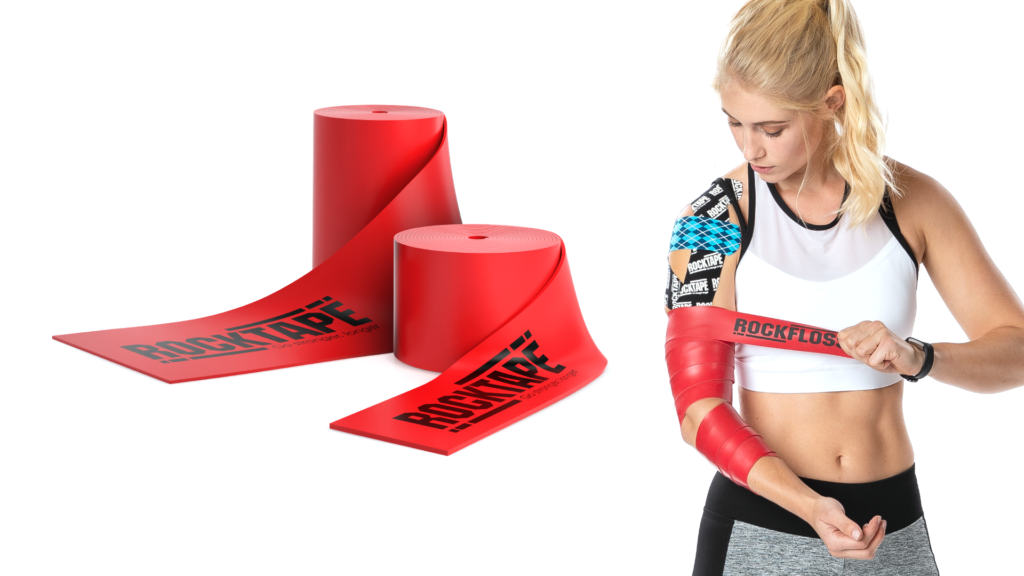
by Mitch Hauschildt, MA, ATC, CSCS
I really love to floss. And, I’m not talking about flossing my teeth. That, I hate to do. Just ask my dentist. I hate it and pretty much refuse to use dental floss.
I love compressional floss bands. They are inexpensive, easy to use, easy to take anywhere, and very versatile. I will admit that I have used them off and on for probably 6-8 years, but have gotten bored with them in the past.
I was first introduced to them by Kelly Starret and the work he was doing in the Crossfit community. I purchased a couple of bands and found them effective for improving tissue mobility, but that was about it. After a year or so, I found myself doing other things instead.
A couple of years ago, I met my good buddy Oliver Derigs, a clinician based in Germany who I lovingly refer to as the “Floss band Ninja.” Oliver flosses everything. He has tons of ideas and uses for floss bands. He started sharing his knowledge and energized me for this simple and effective modality. I am grateful for his leadership.
Here are a few of the reasons that I use floss bands with my patients and clients:
- Mobility Training: This is what most people associate with floss bands. By taking an area of the body that is restricted and compressing it with a band and taking it through a range of motion, you can effectively improve the mobility and range for that tissue.
- Pain Mitigation: It’s hard to believe that compressing and moving a body part can mitigate pain, but it does a great job of relieving pain and soreness. Flossing will reduce pain by changing neurological tone in the area and change the mind’s perception of what is going on. The pain relief might be somewhat short lived, but it is often long enough to allow for exercises to be performed or corrections to be made to the underlying issues causing the pain.
- Fluid Dynamics: Floss bands can be a great way to move fluid. With the use of the floss band an aggressive compression can be achieved that is highly effective at moving fluid out of a swollen and inflamed area of the body. This is great for post operative patients or acute injuries.
- Joint Stability/Centration: This is the treatment that gets me the most excited! I have had great success with using compression bands on places like the shoulder or trunk to feed the brain with stability and motor control. Flossing an unstable area of the body will improve performance, decrease pain, make exercises more effective and, in some cases, get ride of mechanical clicking or catching. Again, this can be short lived because you are manipulating the nervous system, but this intervention is VERY effective on many patients that I work with.
- Manual Joint Mobilizations: Many of the manual joint mobs that we perform as part of our therapies require us as clinicians to grip the skin or an area of the body. After a few months or years of doing this, our hands can get tired and worn out. Floss bands can relieve the stress that we as clinicians experience with our manual therapy. By wrapping the bands on the skin, even with a very minimal stretch, we can grip the area of the body much more easily and with less wear and tear on ourselves.
- Active Assistance: I utilize this technique at a lesser rate than many of the others, but it is great to have at my disposal when I need it. The premise is that you wrap the band around a muscular part of the body with a high degree of stretch, making contracting it much easier for the patient or client. Or, another way to look at it is that it is much harder to stretch because of the compression. Either way you look at it, when applied in this manner, floss bands can be a great tool for helping people to warm up for speed and power activities or for retraining of a movement pattern (I.e. ankle plantar flexion following an achilles rupture).
There are a number of great uses for a simple latex band. These are my favorites. If you aren’t using floss bands currently, I hope you will consider starting. Your patients or clients will thank you.


Leave a Reply